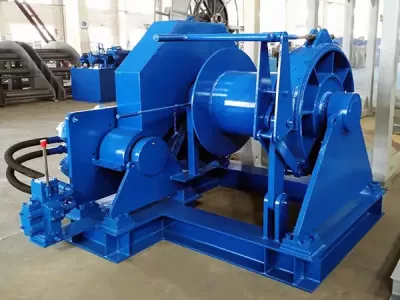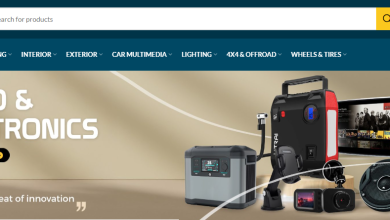How to Choose the Right Hydraulic Winch for Your Heavy-Duty Needs

When you’re in the market for a winch, particularly for heavy-duty applications, choosing the right model is crucial to ensure that the job gets done effectively, safely, and efficiently. hydraulic winch, known for their impressive power, durability, and continuous operation, are often the preferred choice in industrial, off-road, and marine settings. But with so many options available, how do you choose the best hydraulic winch for your specific needs?
This guide will break down the important factors you should consider when selecting a hydraulic winch, along with key features, tips, and best practices to ensure you make the right choice for your heavy-duty operations.
Why Choose a Hydraulic Winch?
Before diving into how to choose the right hydraulic winch, let’s quickly review why a hydraulic winch might be the best option for your heavy-duty applications:
-
Power and Torque: Hydraulic winches deliver more consistent power and torque than electric winches. This makes them ideal for pulling or lifting extremely heavy loads, such as in construction, mining, and large vehicle recovery.
-
Continuous Operation: Hydraulic systems don’t suffer from overheating the way electric winches do. They can run for extended periods without performance loss, making them great for long-duty cycles.
-
Durability: Hydraulic winches are built to last and are less affected by external factors like moisture, dust, and extreme temperatures. This makes them perfect for harsh working environments.
-
Efficiency: Hydraulic winches offer high efficiency, which means you can achieve better results with less fuel consumption, especially in continuous use applications.
1. Understand Your Application and Required Capacity
The first step in selecting the right hydraulic winch is understanding the type of application you’ll be using it for. Hydraulic winches come in various capacities, and each is suited for specific tasks. Here’s how to determine the right winch size and capacity:
What’s the Load You Need to Pull?
You need to know the maximum weight of the load you plan to pull or lift. For example, in the construction industry, you might need to pull large machinery or construction materials. For off-road recovery, you’ll likely be pulling vehicles stuck in the mud or snow.
A general rule of thumb is to choose a winch with a capacity that’s at least 1.5 times the weight of the heaviest load you expect to move. So, if you’re recovering a vehicle that weighs 8,000 lbs, look for a hydraulic winch with at least a 12,000 lbs capacity.
Consider the Duty Cycle
Some hydraulic winches are designed for lighter use, while others can handle long-duty cycles. If you expect the winch to operate for hours at a time without a break (such as in mining or construction), you’ll need a winch designed for continuous use. Make sure the winch you choose is capable of handling long cycles without overheating or losing performance.
2. Check the Hydraulic Motor Power
The hydraulic motor is the core component of any hydraulic winch, so it’s important to ensure that the motor’s power meets your specific needs. Hydraulic motors come in various sizes and configurations, and the motor’s power determines the winch’s performance, especially when pulling heavy loads.
Consider Flow Rate and Pressure:
The flow rate of hydraulic fluid and the operating pressure are key factors in how efficiently the motor can deliver power. The higher the flow rate and pressure, the more power the motor can generate.
Make sure that the winch motor is compatible with the hydraulic system you intend to use. Check the specifications to confirm that the motor matches your hydraulic pump’s flow rate and pressure. This ensures optimal performance and avoids damaging the winch or hydraulic system.
3. Choose Between Synthetic Rope or Steel Cable
When it comes to the rope or cable of a hydraulic winch, you’ll typically have two options: synthetic rope or steel cable. Both have their advantages and drawbacks, so your choice will depend on the specific needs of your operations.
Synthetic Rope:
-
Pros: Synthetic ropes are lightweight, safer to handle, and less prone to kinking. They also don’t rust, making them ideal for marine and wet environments. Additionally, they absorb less water than steel cables, reducing the risk of corrosion over time.
-
Cons: Synthetic ropes are generally more expensive than steel cables and can be damaged more easily by sharp objects or excessive heat.
Steel Cable:
-
Pros: Steel cables are durable, abrasion-resistant, and can withstand heat better than synthetic rope. They’re also more affordable and can handle higher weights over long distances.
-
Cons: Steel cables are heavier, can be difficult to handle, and can corrode if exposed to moisture or salt water over time.
Ultimately, the choice between synthetic rope and steel cable depends on the nature of your work. If you’re working in wet or salty conditions (such as marine environments), synthetic rope may be the better option. However, for heavy industrial applications where durability and abrasion resistance are critical, steel cables may be the preferred choice.
4. Consider the Winch’s Line Speed and Gear Ratio
Line speed and gear ratio play an important role in the overall performance of a hydraulic winch. Line speed refers to how quickly the winch can pull in or release rope or cable, while the gear ratio determines the amount of torque the winch can generate at different speeds.
Line Speed:
A faster line speed can make the recovery process more efficient, especially in off-road recovery situations where you may need to pull vehicles out of tough spots quickly. However, faster speeds often come with the trade-off of reduced pulling power. Make sure to balance speed with the pulling capacity needed for your operations.
Gear Ratio:
The gear ratio determines how much torque the winch generates at any given speed. A lower gear ratio provides higher torque but slower speeds, while a higher gear ratio allows for faster operation with less pulling power. If you need to handle extremely heavy loads or long-distance pulls, opt for a winch with a low gear ratio to maximize pulling power.
5. Choose a Reliable Mounting System
Hydraulic winches are typically mounted onto vehicles, machines, or stationary platforms. Depending on your application, you’ll need to ensure that the winch can be easily and securely mounted to the equipment.
For Off-Road Recovery:
If you’re using the winch in off-road situations, it’s important to ensure that the winch can be mounted on your vehicle securely. Some winches are designed to be integrated into the vehicle, while others may need to be mounted to a winch plate or a custom bracket.
For Industrial or Marine Applications:
In industrial or marine environments, ensure that the winch comes with the appropriate mounting kit for the equipment or structure where it will be installed. The mounting system should provide stability, minimize vibration, and handle the winch’s weight and force.
6. Durability and Protection Features
Hydraulic winches are often used in harsh environments, so choosing a model with high durability and protection features is essential. Look for winches with the following:
-
Weather Seals and Corrosion Resistance: Ensure the winch is designed with weather-sealed components to protect against dust, moisture, and corrosion, especially if you’re working in marine, industrial, or off-road environments.
-
Reinforced Drums and Heavy-Duty Housing: The winch drum should be reinforced to withstand high-torque loads, and the winch housing should be made from durable, rust-resistant materials.
-
Overload Protection: Some hydraulic winches come with built-in overload protection to prevent damage to the winch and the vehicle or equipment it’s mounted on. This is especially important for industrial applications where heavy lifting is common.
7. Safety Features
Finally, always consider the safety features included with the winch. Hydraulic winches should have built-in safety mechanisms, such as:
-
Automatic Load Limiting: This feature ensures that the winch doesn’t attempt to pull more than it can handle, protecting both the winch and the load.
-
Remote Operation Options: Wireless or wired remote control allows the operator to stay at a safe distance while operating the winch, reducing the risk of injury.
Conclusion
Choosing the right hydraulic winch for your heavy-duty needs requires careful consideration of factors like load capacity, motor power, rope type, and mounting options. By understanding the specifics of your application and the unique features of different winches, you can ensure that you select a model that will perform reliably and safely in demanding conditions.
Whether you’re involved in off-road recovery, construction, marine operations, or industrial heavy lifting, the right hydraulic winch can make a world of difference in the efficiency and safety of your operations. Keep these key factors in mind, and you’ll be able to choose the best hydraulic winch for your specific needs.









